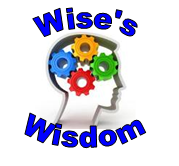The following is an article from one of my favorite online sites, edutopia. It is easy to get lost in this site for a couple of hours simply perusing the articles. The articles are always written in such a way that I am prompted to analyze my own practices and philosophy. In addition, they are typically short and to the point! This particular article explores the concept of 21st century schools. As I read this article, I found myself asking several questions. The following are just a few:
- What percentage of our classrooms would fall under the heading "Classroom A" versus "Classroom B?"
- If one attribute listed under "Classroom A" was removed from EVERY classroom in the Hilliard City School School District, how would education be impacted?
- If "rules were unnecessary," would our students be highly effective?
- How many of our teachers are using devices to teach like the attributes listed under "Classroom A?"
- If every student in your building had a device what would change?
- Do the papers/handouts that get distributed to our students and community reflect the attributes listed under "Classroom A" or "Classroom B?"
As you read this article, I encourage you to pose your own questions, and I challenge you to take a scavenger hunt of your school looking for the qualities listed under "Classroom A" and "Classroom B."
5 Things I Want My Daughter to Learn in School
My selection this week comes from Jeff Delp, a Junior High Principal in Arizona. Much like Jeff, I often find myself reflecting on the education I want my two daughters to have before they head off in to the "real world." It's often hard for us as administrators to put aside everything we must balance on a day-to-day basis and view the education we provide in the HCSD through the eyes of a parent, or better yet through the eyes of the nearly 16,000 students that walk through the doors everyday. As I read Jeff's blog, I found myself in complete agreement with what he identifies as the 5 things he wants his daughter to learn in school. I can only hope the same for my two daughters and their peers.
Have a great week!




















